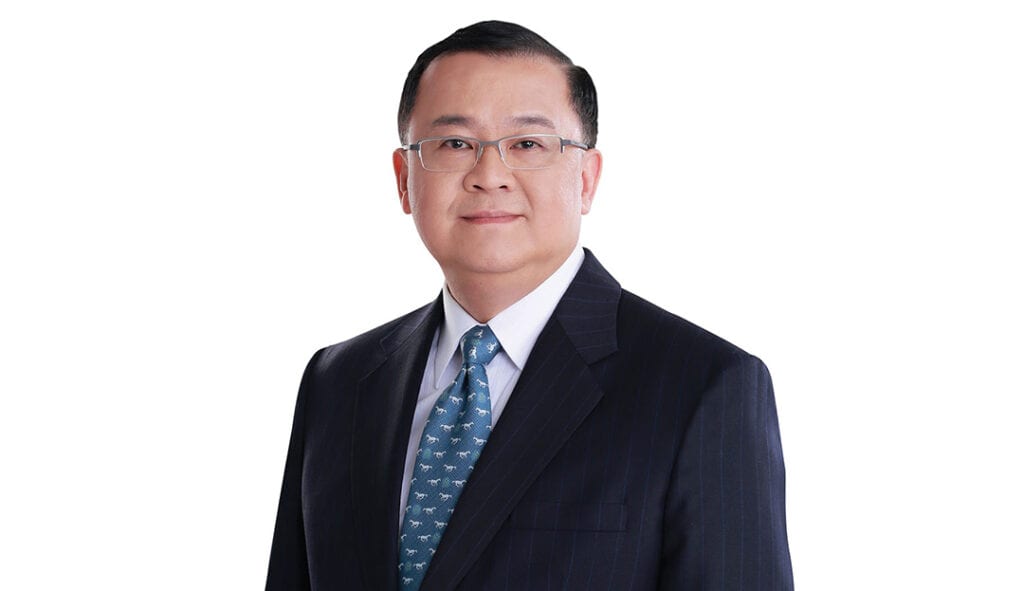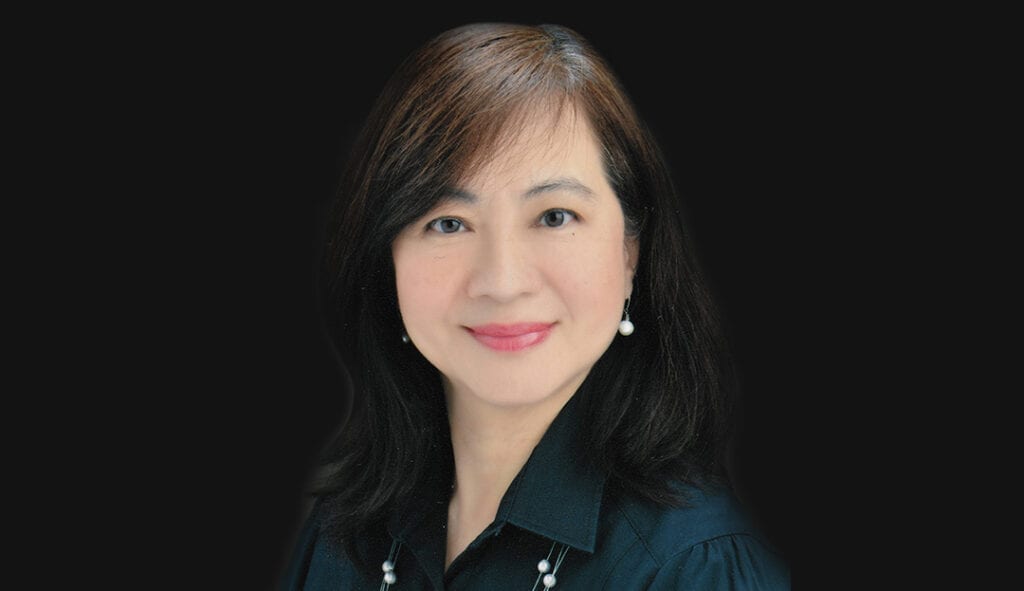
Union Bank of the Philippines is one of the ten winners of the 1st Mansmith Innovation Awards. In this interview, we asked UnionBank President and CEO Edwin Bautista about the thinking behind the multi-awarded digital transformation of the bank, which was their direction under his leadership even before the Covid-19 pandemic. Mr. Bautista will be speaking at the 1st Mansmith Innovation Summit and Awards on March 3-4, 2021.
Q1: How was the direction of digital transformation of UnionBank decided?
A1: UnionBank has long had a goal to be a “Top 5 Bank.” When I was appointed President (almost 5 years ago now), I felt that this goal was achievable, but that just “doing more of the same” was not going to be enough.
Thus, during our strategic planning session that year, we made sure to have several well- known “futurists” and a world-class business consultancy group help us understand the game- changing challenges that Banks and Financial Institutions were facing or about to face.
That’s when one of them “hit us front-&-center” when they concluded that we needed to “Digitize or Perish.” This came with the insight that our future-competition was not just limited to peer-banks but also to Fintechs and TechFins such as Facebook, Google etc., who already had a digital relationship with consumers that they wanted to leverage against.
Furthermore, the emergence and rapid adoption of new technologies such as Blockchain, Artificial Intelligence, Blockchain or Distributed Ledger Technology (“DLT”) and Cloud Computing would drastically change industry paradigms; as well as accelerate the “convergence-disruption” of various industries.
Thus, off-we-went on our digital transformation journey.
Q2: A major transformation requires a structure. What was the transformation team composed of? How were decisions made?
A2: Immediately after we decided on our digital transformation, we realized that the Bank (then) had no “digital masters/experts” in its ranks. So, one of the first things we did was to look far- &-wide for the “best-in-class digital masters”, regardless of industry and preferably “outside of Banking & Financial Services.” With this new core leadership on-board, we tasked them to design-from-scratch the “optimum digital architecture”; again benchmarking against all industries (beyond Banking).
Transformation is best achieved with the blending of banking experts collaborating with experts from other industries. Because we believe in the power of diversity of talent, experience, and perspectives that – when driven by a common vision – is capable of producing truly endless innovations.
Once we secured Board Approval to this architecture and road-map, we concentrated on getting the buy-in of both senior executives and middle-management. The former because they had the influence over their business units and the latter because we believed they would be the “primary beneficiaries” of our successful digital transformation.
Aside from more frequent “town halls”, many smaller group meetings soon evolved which we liked because it showed that many in the Organization were very passionate about this journey. These smaller meetings focused on delivering a seamless, end-to-end “U/X” (user-experience) and eventually evolved into cross-functional “squads” and “teams”, which further broke-down the “traditional functional silos” in regular banking and finance organizations.
The “teams” and “squads” quickly took ownership of creating possible solutions and recommendations that would then be elevated to Senior Management and the Board for final approval. This was very encouraging as it showed that: 1) there was broad engagement, participation and ownership of the transformation journey; and 2) there were many more ways to “skin-the-cat” as it were given the explosion of ideas and suggestions from the rank-&-file (not just “Management”).
Up to this today, this “from the ground up” and “collaborative, consultative” planning and decision-making is what we are practicing in UnionBank. I attribute this as one of the “secrets” to our “quick successes” as well as our “fast pivots” when we needed to adjust our initial plans.
Q3: How were the risks versus rewards of major investment sold to the board? How long did it take to get their approval?
A3: Going back to our major epiphany about 5 years ago – “DIGITIZE or PERISH!” – I would say that the “strategic risks” were already well-understood by our Board. Perhaps the main risks were “operational or executional risks” as our total transformation could have gone “overtime” and “over-budget.” This is why we made sure that we were aligned with the Board on “year- by-year” goals in our (multi-year) digital transformation journey.
What’s more is that, aside from funds to be invested and timelines, we crafted measurable KPI’s which included end-user and/or C/X (customer experience) feedback whenever possible. At this stage, we had gone beyond “cost savings” as the core reason for our transformation but rather “best in class C/X” and “customer centricity” as the primary KRA’s of our efforts. By being clear-&-consistent in “what to expect” and “how to measure progress”, the Board has rewarded us with constant support and counsel; and, lately, has even “encouraged” us to invest more and “transform faster”!
Q4: What were the initial critical issues you had to pay attention to ensure successful execution of the digital-first vision?
A4: There certainly were many critical issues that I was very aware of as we executed our digital transformation; but there was always one common core challenge. And this was to ensure that “No One Would be Left Behind” in our transformation! Not our customers, our colleagues, and partners etc.
Importantly, this core-challenge also became one of our key enablers for change. Because of the promise of ”No One Would Be Left Behind”, everyone joined-in over time, which allowed us to transform-at-scale. Our employees and partners also came together to move forward; and our customers rewarded our efforts by changing their banking habits and processes, in step with our transformation!
Constantly repeating that “customer centricity” was our main KRA helped galvanized our actions, beyond “improved efficiencies” and “reduced costs.” Simply-put, if our new “process” or “digital touchpoint” did not make our customers “happier”, “safer”, “(do things) faster-&- simpler”, then it would tell us to continue to iterate and upgrade, update etc.
As for our fellow UnionBankers, we saw how “middle-aged” colleagues embraced and embarked on new “digitally-enabled” careers such as coding, digital operations, data analytics & A.I. etc. Using them as “role models”, they helped prove that a successful digital transformation would also “transform” their roles from “back-room and back-up” to “customer-facing.”
What’s more, the experience of these veterans greatly added the proper “human relationship context” in our new digital touchpoints to ensure that “Unionbank digital banking” is “more human” and “more responsive” (and where we leverage “A.I.” as “Augmented Intelligence) to fulfill our customers’ needs than ever-before. The ability of our fellow Unionbankers to quickly skill-up on digital capabilities is a testament to the resiliency of our bank culture… able to unlearn, learn and re-learn.
Q5: The pandemic accelerated the digital transformation of various major banks. Where do you plan to see UnionBank in the digital landscape among banks?
A5: That is certainly very true. And the digital normal is here to stay… for good!
BSP (Bangko Sentral ng Pilipinas) Governor Benjamin Diokno has, in fact, said that, because of the Covid pandemic, “PESONet payments more than doubled with volume surging by 122 percent year-on-year and value rising by 119 percent over the same period…. Similarly, we have also observed the sustained adoption of InstaPay. Year-on-year increase in transactions, from July 2019 to July 2020, exhibited a drastic upward trend in volume and value of transactions by 739 percent and 442 percent, respectively.”
In fact, we credit the BSP, under Gov. Diokno’s watch, of being a major catalyst in this rapid digital transformation of Banks and Financial Institutions. Aside from PesoNet and InstaPay – where UnionBank is, by the way, among the “top 3” Bank enablers – the BSP is moving ahead with issuing Digital Banking licenses, promoting the EGov payment channels, developing a digital currency etc.; all to promote broader financial inclusion.
Seen in this light, I believe the future looks bright for UnionBank and its subsidiaries in this environment!
Early-on in executing our digital transformation, we started preparing for different “end-states” – one assuming that Banking would be “more or less the same but digitized” and one Banking services would be offered by many new players and even become “embedded” or “invisible.”
No matter how the future unfolds, I am confident that UnionBank group will be a key player!
Today, we already are the Best Digital Universal Bank in the country, as validated by the numerous international awards that we have received these last few years!
We also have our very own fintech subsidiary, UBX, that can both co-develop, partner with or acquire new technologies for better customer centricity; and we already have our CitySavings Bank and its subsidiaries that are dominant in Teachers’ Loans and growing in SME lending and motorcycle loans plus PetNet, with its thousands of outlets in the countryside that has long been dominant in OFW remittances and local payments-&-disbursements.
Our digital core banking system allows us to more quickly integrate all these key pieces into one integrated platform. Moreover, we continue to have an “open door” to fintechs and new digital players with our “sandbox” platform, that allows all parties to “learn-&-grow-faster together.” For the only “sure” ingredient-for-success is Total Customer-Centricity!
Unionbank’s President and CEO, Edwin Bautista, speaking at the 15th Mansmith Market Masters Conference on May 8th in The Fifth Rockwell, shares insights about discovering innovation through digital transformation.
********
JOSIAH GO is the course designer of the 55-video Business Model Course available at www.continuum-edu.com, the first in the Philippines and in Asia.
The search for the 4th Mansmith Innovation Awards is ongoing. Send your application/nomination here: https://bit.ly/4thMansmithInnovationAwards.

See more articles on Digital Transformation.


